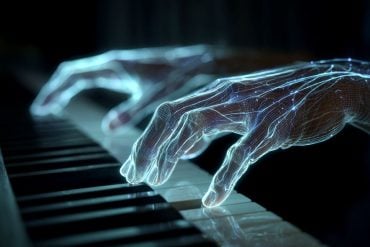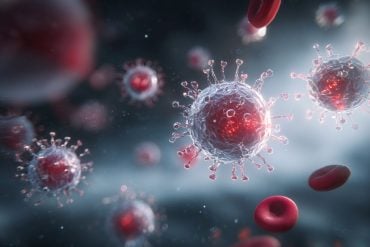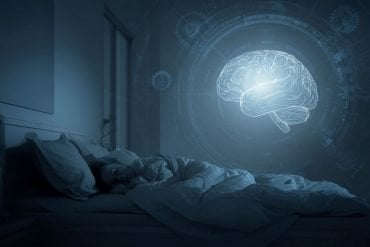Summary: Researchers found that deep brain stimulation (DBS) can improve arm and hand strength in patients affected by stroke or traumatic brain injury. In tests on monkeys and humans, DBS immediately boosted muscle activation and grip force without causing involuntary movements.
Stimulation of the motor thalamus allowed a human patient with arm paralysis to regain significant motor function, including lifting and grasping objects. These findings suggest DBS could offer a new therapeutic option for individuals suffering from motor deficits caused by brain injuries.
Key Facts:
- DBS improved arm and hand function in stroke and TBI patients by stimulating the motor thalamus.
- Monkeys and human patients showed immediate improvement in muscle strength and movement.
- DBS offers new hope for restoring motor function after traumatic brain injury or stroke.
Source: University of Pittsburgh
Deep brain stimulation may provide immediate improvement in arm and hand strength and function weakened by traumatic brain injury or stroke, University of Pittsburgh School of Medicine researchers report today in Nature Communications.
Encouraging results from extensive tests in monkeys and humans open a path for a new clinical application of an already widely used brain stimulation technology and offer insights into neural mechanisms underlying movement deficits caused by brain injury.
“Arm and hand paralysis significantly impacts the quality of life of millions of people worldwide,” said senior and corresponding author Elvira Pirondini, Ph.D., assistant professor of physical medicine and rehabilitation at Pitt.
“Currently, we don’t have effective solutions for patients who suffered a stroke or traumatic brain injury but there is a growing interest in the use of neurotechnologies that stimulate the brain to improve upper-limb motor functions.”
Brain lesions caused by serious brain trauma or stroke can disrupt neural connections between the motor cortex, a key brain region essential for controlling voluntary movement, and the muscles. Weakening of these connections prevents effective activation of muscles and results in movement deficits, including partial or complete arm and hand paralysis.
To boost the activation of existing, but weakened, connections, researchers proposed to use deep brain stimulation (DBS), a surgical procedure that involves placing tiny electrodes in specific areas of the brain to deliver electrical impulses that regulate abnormal brain activity.
Over the past several decades, DBS has revolutionized the treatment of neurological conditions such as Parkinson’s disease by providing a way to control symptoms that were once difficult to manage with medication alone.
“DBS has been life-changing for many patients. Now, thanks to ongoing advancements in the safety and precision of these devices, DBS is being explored as a promising option for helping stroke survivors recover their motor functions,” said senior author and surgical leader of the project, Jorge González-Martínez, M.D., Ph.D., professor and vice-chair of neurosurgery and director of the epilepsy and movement disorders program at Pitt.
“It offers new hope to millions of people worldwide.”
Taking cues from another successful Pitt project that used electrical stimulation of the spinal cord to restore arm function in individuals affected by stroke, scientists hypothesized that stimulating the motor thalamus – a structure nested deep in the brain that acts as a key relay hub of movement control – using DBS could help restore movements that are essential for tasks of daily living, such as object grasping.
However, because the theory has not been tested before, they first had to test it in monkeys, which are the only animals that have the same organization of the connections between the motor cortex and the muscles as humans.
To understand the mechanism of how DBS of the motor thalamus helps improve voluntary arm movement and to finesse the specific location of the implant and the optimal stimulation frequency, researchers implanted the FDA-approved stimulation device into monkeys that had brain lesions affecting how effectively they could use their hands.
As soon as the stimulation was turned on, it significantly improved activation of muscles and grip force. Importantly, no involuntary movement was observed.
To verify that the procedure could benefit humans, the same stimulation parameters were used in a patient who was set to undergo DBS implantation into the motor thalamus to help with arm tremors caused by brain injury from a serious motor vehicle accident that resulted in severe paralysis in both arms.
As soon as the stimulation was turned on again, the range and strength of arm motion was immediately improved: The participant was able to lift a moderately heavy weight and reach, grasp and lift a drinking cup more efficiently and smoothly than without the stimulation.
To help bring this technology to more patients in the clinic, researchers are now working to test the long-term effects of DBS and determine whether chronic stimulation could further improve arm and hand function in individuals affected by traumatic brain injury or stroke.
Other authors of this research are Jonathan Ho, B.S., Erinn Grigsby, Ph.D., Arianna Damiani, M.S., Lucy Liang, M.S., Josep-Maria Balaguer, M.S., Sridula Kallakuri, Lilly Tang, B.S., Jessica Barrios-Martinez, M.D., Vahagn Karapetyan, M.D., Ph.D., Daryl Fields, M.D., Ph.D., Peter Gerszten, M.D., T. Kevin Hitchens, Ph.D., M.B.A., Theodora Constantine, P.A.-C., Gregory Adams, B.S., Donald Crammond, Ph.D., and Marco Capogrosso, Ph.D., all of Pitt.
Funding: This research is supported by internal funding from the departments of Physical Medicine and Rehabilitation and of Neurological Surgery at Pitt. Additional funding was provided by the Walter L. Copeland Foundation, the Hamot Health Foundation and the National Institutes of Health (R01NS122927-01A1).
About this DBS and neuroscience research news
Author: Allison Hydzik
Source: University of Pittsburgh
Contact: Allison Hydzik – University of Pittsburgh
Image: The image is credited to Neuroscience News
Original Research: Open access.
“Potentiation of cortico-spinal output via targeted electrical stimulation of the motor thalamus” by Elvira Pirondini et al. Nature Communications
Abstract
Potentiation of cortico-spinal output via targeted electrical stimulation of the motor thalamus
Cerebral white matter lesions prevent cortico-spinal descending inputs from effectively activating spinal motoneurons, leading to loss of motor control. However, in most cases, the damage to cortico-spinal axons is incomplete offering a potential target for therapies aimed at improving volitional muscle activation.
Here we hypothesize that, by engaging direct excitatory connections to cortico-spinal motoneurons, stimulation of the motor thalamus could facilitate activation of surviving cortico-spinal fibers thereby immediately potentiating motor output.
To test this hypothesis, we identify optimal thalamic targets and stimulation parameters that enhance upper-limb motor-evoked potentials and grip forces in anesthetized monkeys. This potentiation persists after white matter lesions.
We replicate these results in humans during intra-operative testing. We then design a stimulation protocol that immediately improves strength and force control in a patient with a chronic white matter lesion.
Our results show that electrical stimulation targeting surviving neural pathways can improve motor control after white matter lesions.







